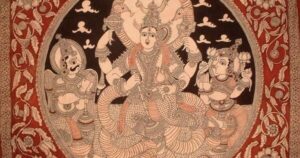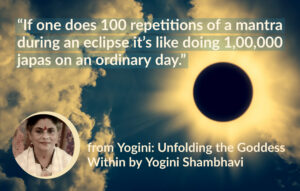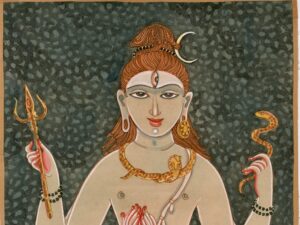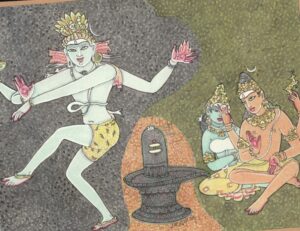Vishnu is the primary Devata for the Sun in Vedic thought, notably in the form of Surya-Narayana. Narayana is the cosmic form of Vishnu who rules over the entire universe. The mantra – OM Namo Narayanaya! – is a mantra of sadhus and connects us with the supreme Consciousness. It can be used to draw in the Vishnu energy overall and harmonize all astrological and karmic influences.
The Sun is Vishnu as the supreme Purusha, which is said to dwell in the Sun in the Upanishads (Aditye Purusha). Yet Vishnu and Narayana are also related to the planet Mercury (Budha), particularly in its role as governing the Buddhi or higher intelligence and Dharma in general. Mercury is often regarded as the intelligence of the Sun or as his personal manifestation.
In this regard some Vedic astrologers may remember that the supreme Devata for the Sun in the traditional Jyotish list (Pratyadhi Devata) is Shiva. We have discussed Shiva and Vedic astrology in another article. Yet in terms of broader Jyotish texts and Puranic symbolism, Vishnu is more commonly related to the Sun, while Shiva also has connections with the Moon. This is because such universal Devatas have many levels of influence according to their different qualities and expressions.
Rigveda speaks of the seven half-embryos that move according to the laws of Vishnu, suggesting Vishnu as ruling the seven visible planets (RV I.164.36). To Vishnu is attributed the supreme abode in the highest Heaven (Paramam Padam), which is the source of all bliss that all the seers aspire to. In addition, Vishnu as Dhruva relates to the Pole Star which is the central unmoving point beyond the celestial sphere ruling all cosmic movements. Rigveda speaks of the four times ninety or 360 Names of Vishnu (RV I.155.6) as a revolving wheel or chakra, indicating one name of Vishnu for every degree of the Zodiac. This means that Vishnu is not only the Sun but the guiding intelligence of the universe as a whole, responsible for the structure of the cosmos.
Many Jyotish texts are Vaishnava in orientation, like the key foundation text Brihat Parashara Hora Shastra which emphasizes him. Many Vedic astrologers recommend chanting the Thousand Names of Vishnu (Vishnu Sahasranama from the Mahabharata) for countering planetary afflictions and to develop skill in chart interpretation.
Avatars of Vishnu
Vishnu is famous for his ten incarnations or avatars, the stories of which are described in different Puranas. These have planetary equivalents as outlined in the Brihat Parashara Hora Shastra. Rama and Krishna as the Sun and the Moon are the prime Vishnu avatars. The tenth avatar Kalki, yet to come, is not part of the list.
Each avatar has its own special day during the year which is honored as its manifestation day (Jayanti). These are determined by the Hindu Panchanga, its months and tithis, which as lunar based vary slightly every year. We have listed these below according to the Hindu lunar month, waxing (shukla) or waning (krishna), and tithi or phase of the Moon at that time.
Sun——–Rama: Ram Navami, Chaitra Shukla Navami
Moon——Krishna: Krishna Janmashtami, Shravana Krishna Ashtami
Mars——-Narasimha (Man Lion): Vaishakha Shukla Chaturdashi
Mercury—–Buddha: Vaishakha Purnima (full Moon)
Jupiter——Vamana (Dwarf): Trivikrama, Bhadrapada Shukla Dwadashi
Venus——Parashurama: Vaishakha Shukla Tritiya
Saturn——Kurma (Tortoise): Vaishakha Purnima (same as Buddha Purnima)
Rahu——-Varaha (Boar): Bhadrapada Shukla Tritiya (day before Ganesh Chaturthi)
Ketu——-Matsya (Fish): Chaitra Shukla Tritiya
Nakshatras and Vishnu
Many Nakshatras are associated with Vishnu, notably:
Shravana (10 00 – 23 20 Capricorn), his Trivikrama or Vamana form that is most prominent in Rigveda and noted in Puranic stories of Bali and Prahlad. Shravana is specifically ruled by Vishnu and gives inner wisdom and experience.
Rohini (10 00 – 23 20 Taurus) with Sri Krishna born on the waning eighth tithi in Rohini (Krishna Janmashtami), grants Krishna’s grace and guidance.
Purnarvasu (20 00 Gemini – 03 20 Cancer) with Sri Rama, notably the last quarter of the Nakshatra in Cancer that marked his Moon at his birth at the ninth tithi of the month of Chaitra (Ram Navami). Otherwise is the Nakshatra of the Mother (Aditi) who governs over all the Sun Gods (Adityas).
Purva Phagluni (13 20 – 26 40 Leo) and his Bhaga/Bhagavan form as a form of the Sun (Aditya), highlights devotion.
Uttarashadha (26 40 Sagittarius – 10 00 Capricorn), the place of the Vishve Devas or Universal Deities, the powers of light of which Vishnu is foremost as ruling the celestial sphere.
All Nakshatras in the sphere of the Sun have connections with Vishnu as the prime solar deity and often the supreme Aditya. These include Purva Phalguni (Bhaga), Uttara Phalguni (Aryaman), Hasta (Savita), Anuradha (Mitra), Shravana (Vishnu), Shatabhishak (Varuna), Revati (Pushan).
Additional Factors of Interpretation
Determining the influence of Vishnu in the birth chart is central to finding one’s Dharma, yogic path, and inner Light. Vishnu energy is connected to houses of Dharma as 1,5,9, as Self, intelligence (buddhi) and Atman/Dharma. It gives Sattva guna, the quality of light and harmony. This is also indicated by astrological Yogas between the Sun and Mercury (Budhaditya Yogas).
As related to the Sun, Vishnu is a lion and connects to the sign Leo, particularly as a ruler or king as Vishnu was often the patron deity of kings. As related to Mercury, the signs Gemini and Virgo ruled by Mercury help develop the Vishnu energy in the mind.
Besides Sun and Mercury, Vishnu has connections with Jupiter as the guru in the chart, particularly when it associates with the Sun and Mercury. This includes affinities to the signs Pisces and Sagittarius.
Relative to Ayurveda and medical astrology, we should remember the Dhanvantari form of Vishnu, who is the ideal doctor and the special avatar of Vishnu born from the original churning of the cosmic ocean, to help us deal with afflictions of body and mind. In this regard the planet Mercury is often a doctor or healer and the Sun rules over Prana.
Yet Vishnu cannot be limited to a few astrological parameters. Vishnu is the guiding Consciousness that structures the universe as a whole from the central point of cosmic origins that is our true Self. The consorts or Shaktis of Vishnu are also important as Sri, Lakshmi, Narayani, Bhu Devi, Sita and Radha, but we will cover these relative to another article on Vedic astrology and the Goddesses.
Vamadeva Shastri







